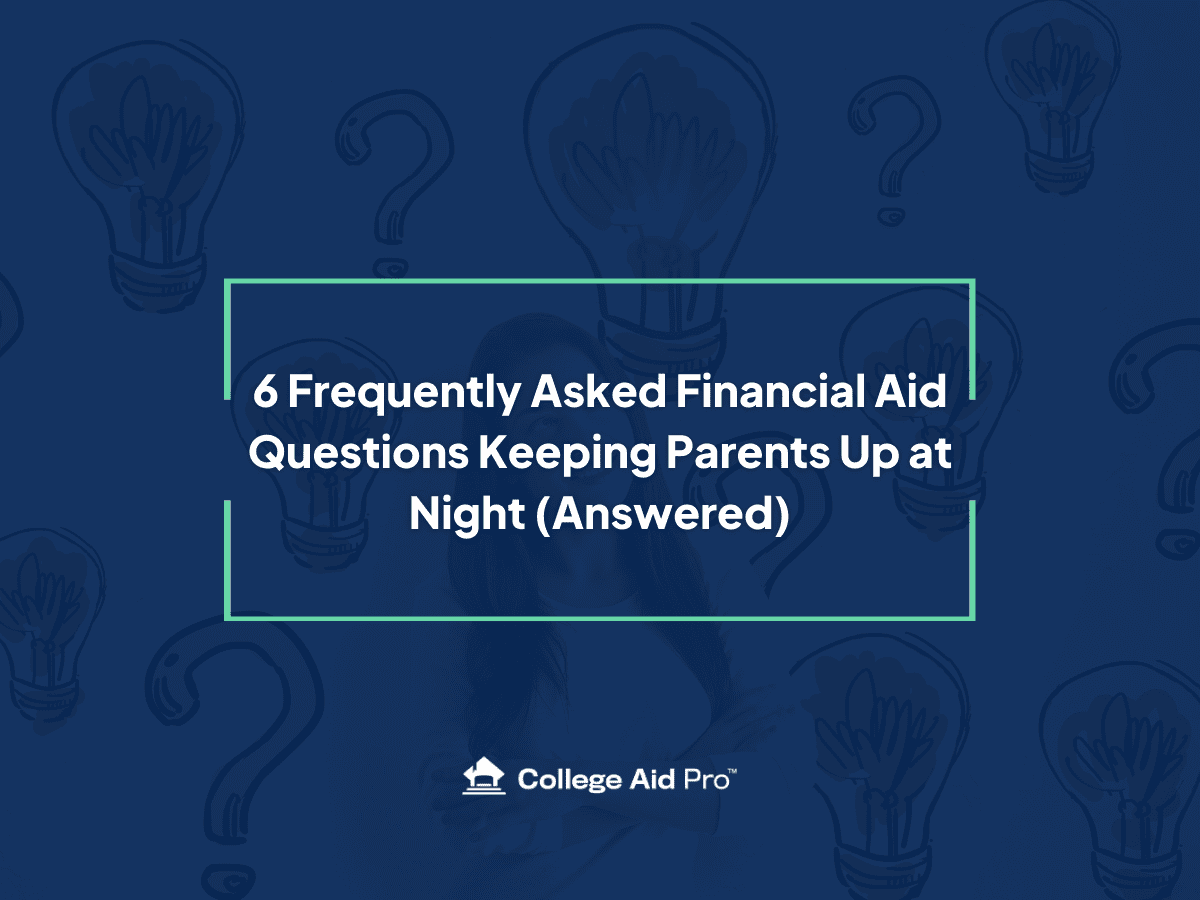When families think about bridging the gap between what they have saved for college, the financial aid they’re offered, and the total cost of attendance, their minds usually go straight to private scholarships. After all, everyone has heard a story from a friend or distant relative of a talented student with exceptional test scores who got a full-ride scholarship to a prestigious university from an alumni group or other third-party source.
From the outside, it seems like these scholarships must be endless in amount and availability. There are always news stories about the amount of unused financial aid floating around out there – why shouldn’t some of it get funneled to your soon-to-be college student?
Unfortunately, the world of private scholarships is often much more complicated than parents realize. Navigating the scholarship application landscape takes time and patience, and often even the most qualified students don’t get awarded any scholarship funds due to the overabundance of applicants.
Still, when it comes to saving for the cost of college, every dollar counts. If private scholarships are part of your ideal college funding plan, here are five things you and your student need to know.
1. Private Scholarships Can Be Extremely Competitive
Most private scholarships are intensely competitive, and the competition gets tougher the bigger the total award is. Some of the most popular scholarships (from Coca-Cola, Burger King, AXA Achievement, etc.) have high balances but also get thousands of applicants from across the nation each year and the application process can be very intensive (essays, volunteering, etc).
Setting realistic expectations when applying is a key first step. Many parents think the world of their kids, and translate that into expecting massive private scholarship winnings. While it would be amazing if this was the case, it’s rarely how things turn out. Look to private scholarships to potentially cover a small gap in funding, or to take care of other smaller expenses – like books, school supplies, or laptops.
2. Most Private Scholarships Are For Smaller Amounts
Piggybacking on my previous point, most of the “big ticket” scholarships from big, national companies are highly competitive. They’re also rare, and your student has a much better chance of winning a smaller scholarship from an alumni group or other small organization.
In fact, the vast majority of private scholarships, in my experience, are $500 or less. Often, high school juniors and seniors who are applying for private scholarships overlook these awards. However, if you know going into the application process that these smaller scholarships have less competition and can make an impact when weighed against the cavalcade of expenses your student is about to face – they may be worth your student’s time!
Encourage your student not to dismiss these smaller amounts, and share how it can cover a new computer or books. All these small amounts can and will add up when paying for college. But we also encourage you to use your time wisely. Yes, $500 extra to cover a computer is nice, however, if they’re requiring a lengthy essay + volunteer hours + an additional application, you might be better off spending that time looking elsewhere. The main takeaway here is to make sure the payoff matches the time commitment.
3. Look Close To Home for Private Scholarships
Local scholarships are often overlooked in favor of larger, national scholarships. However, you and your family may be surprised by the plethora of local scholarships that are available to high school students.
Have your student research a few local organizations or membership clubs – these are great and often untapped scholarship offerings. A few places to look into for local scholarships are:
- Civic groups such as Moose International
- Local churches
- Clubs such as Lions Club International
- Small, local banks
- Community buildings or centers like libraries or recreational facilities
These groups often have scholarships available that few know about. Check any stipulations of the scholarship while researching, as there are occasionally volunteer work or other requirements in order to apply.
4. Try Finding Major-Specific Private Scholarships
Some alumni groups and other organizations offer scholarships for specific fields. There are scholarships available for those going into the medical field, STEM, and other areas of study. Searching for scholarships of varying award sizes that are directly connected to what your student wants to major in can help you narrow the playing field and give them a better shot of winning free money for college.
In the same vein, see if your student plans to minor in anything (theatre, leadership, music, etc). It may be worthwhile to consider a major, especially if it aligns closely to your student’s current extracurriculars because there are some scholarships given to those that even minor in a certain area. It may not be a full ride, but it could be a few thousand dollars to help you bridge the gap between your expected family contribution and the cost of tuition.
5. Leverage Your School Resources
Did you know that your student’s high school guidance counselor likely has a list of scholarships or resources available to the college-bound? Your student can schedule a meeting with them to learn more about where to find free money for college, and whether or not they’re a good candidate for certain private scholarships.
Additionally, you may choose to reach out directly to the college that your student is interested in attending. Most scholarships aren’t actually private awards from a third party. They come directly from the colleges themselves. Don’t be afraid to ask your student’s school of choice if there are scholarship opportunities available, how to apply, and what the requirements are.
Bonus: Use Digital Tools To Find and Track Private Scholarships
At College Aid Pro, we know that trying to make a college education affordable is confusing and complicated. I’ve seen hundreds of families left confused and paying more than they should’ve for college. That’s why we encourage everyone to use a scholarship research tool to help them.
There are many online scholarship research tools, but MyCAP is the only resource that allows you to search for thousands of different private scholarships, compare the cost of thousands of colleges and universities, optimize financial aid, and gain access to college experts who can support you through the process. Sign up for your free account by clicking here.




